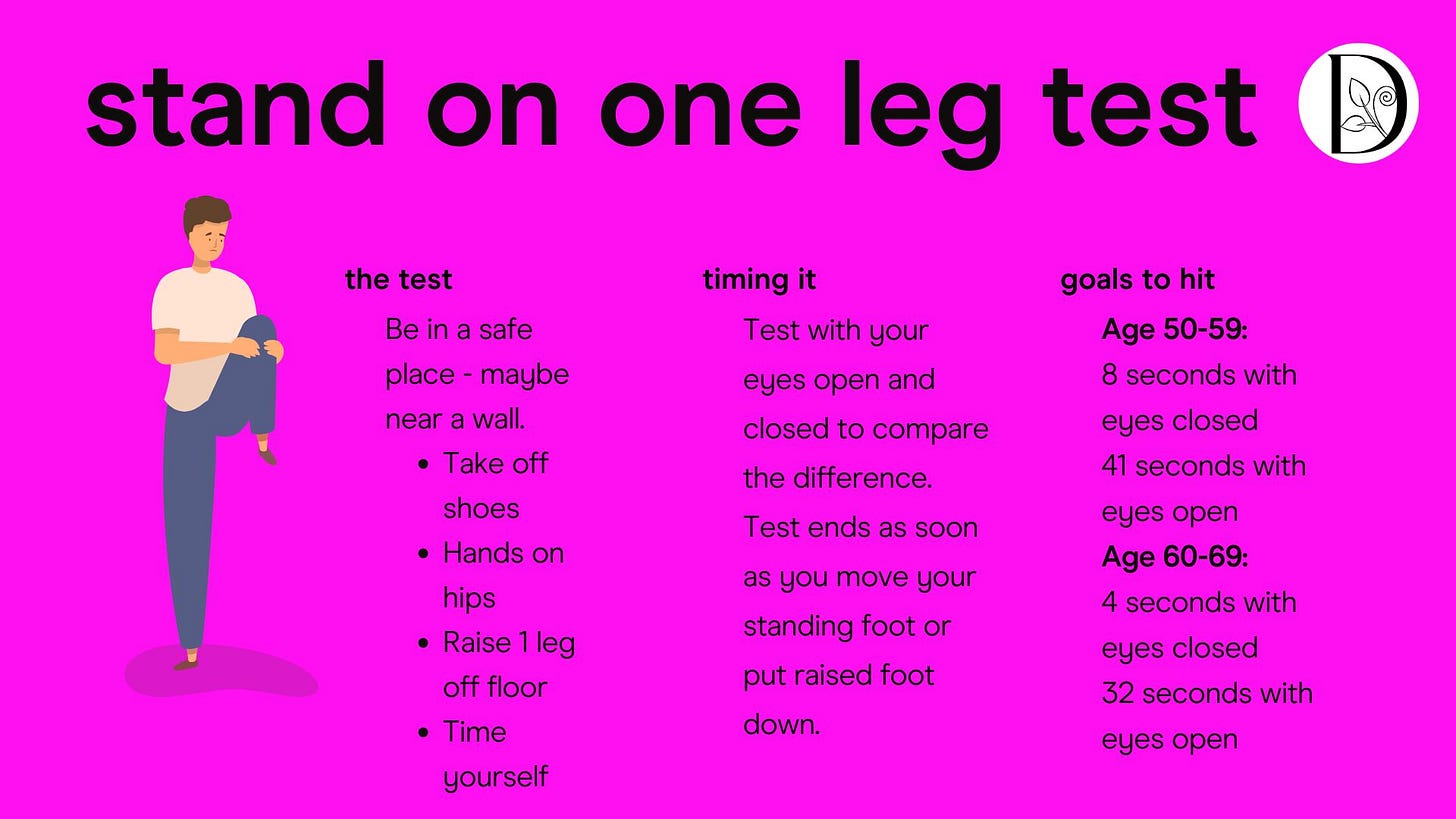Why balance is brutal
Because if you're over 50 and you can't stand on one foot for 10 seconds or more, then you're twice as likely to die within the next 10 years as someone who can. Horrible, right?
I’ve never been good at balance.
I’m an all or nothing kinda person. (Verging more towards nothing than ‘all’ when it comes to physical strength and mobility.)
When I discovered the standing on one leg test, I only just passed it.
I’ve been obsessed with sweating it out at Bikram yoga for more than 10 years, which helped me improve at standing on one leg. But it didn’t save me. Only the strength training helped.
This study found the standing on one leg test is a good predictor of longevity. So I got my shit together.
I started strength training with my husband. Just as I now eat all my vegetables and floss my teeth, I do this because it’s good for me. Not because I love doing it.
I’ve also just bought these Merrell bare foot shoes, which are ridiculously expensive for something so ugly.
My calves are killing me. But I can feel my toes getting stronger. I will stick with them, just as I have done with the teeth flossing.
This is a brutal truth. If you don’t want to hear it. Close this article now: you need to improve your balance. Not just because it’s good for you but because it’s a ‘symptom’ of healthy and strong body.
You can practice your balance by:
Walking up stairs (get stronger by taking two steps at a time)
Using just your toes or heels to walk
Doing yoga or dance
Practicing balancing on one foot (it’s torture, but try it every day and watch yourself improve)
Now, I’ve written before about my waning grip strength. Grip strength decreases at a faster rate than other body parts, so it’s another good predictor of how shitful your body can be at ageing.
You can read more about this test (and 3 others) in this story I wrote for Citro.
Embrace the stand on one leg test
What it is: Stand on one leg with your eyes open and closed to see how long it takes you to sway, wobble or slam your raised foot back to the ground to prevent a fall.
How to do it: Take your shoes off and find a safe place, perhaps with a wall or rail you can grab if you need.
You’ll also need a timer (your smartphone will have one).
To start the test, stand with legs apart and cross your arms over your chest. Raise one leg and time how long you can hold it off the ground without losing your balance.
Time yourself with your eyes open and eyes closed (having your eyes closed makes it so much harder).
The late Dr Michael Mosley popularised this standing on one leg test as a predictor of dementia and healthspan.
He found a British Medical Journal study carried out over 13 years found lower levels of physical capability at age 53 was associated with higher rates of mortality.
A Sydney University study found people in mid-to-later life who are unable to stand unsupported on one leg for at least 10 seconds are 84% more likely to die from any cause over a subsequent 10-year period.
A 2024 study confirmed this particular balance test is a good measure of ‘neuromuscular ageing’, which is the gradual decline in strength, co-ordination, balance and mobility everyone faces as they get older.
As a guideline for test results, the study found:
People under 40 with eyes open averaged 45 seconds. With eyes closed: 15 seconds.
Aged 40-49 with eyes open averaged 42 seconds. With eyes closed: 13 seconds.
Aged 50-59 with eyes open averaged 41 seconds. With eyes closed: 8 seconds.
Aged 60-69 with eyes open averaged 32 seconds. With eyes closed: 4 seconds.
Aged 70-79 with eyes open averaged 22 seconds. With eyes closed: 3 seconds.







Even though I've been doing yoga for a long time, my balance is shit. For me the problem probably has a lot to do with leg strength which I'm now working on in a big way. No one told us how much more we'd have to exercise as we get older!